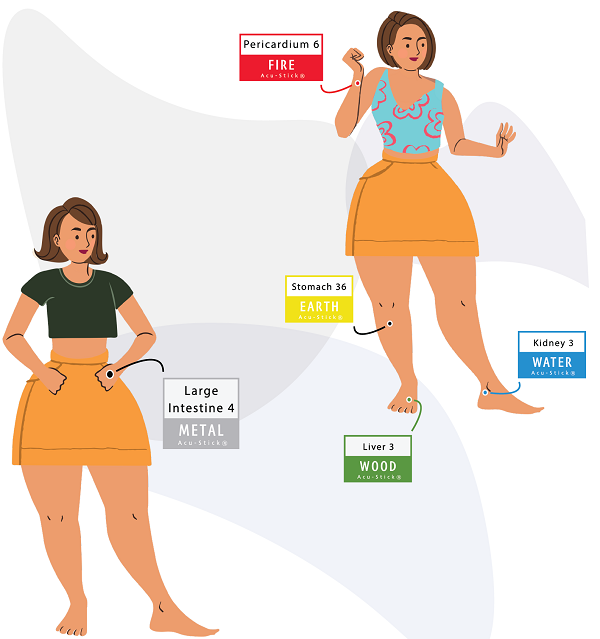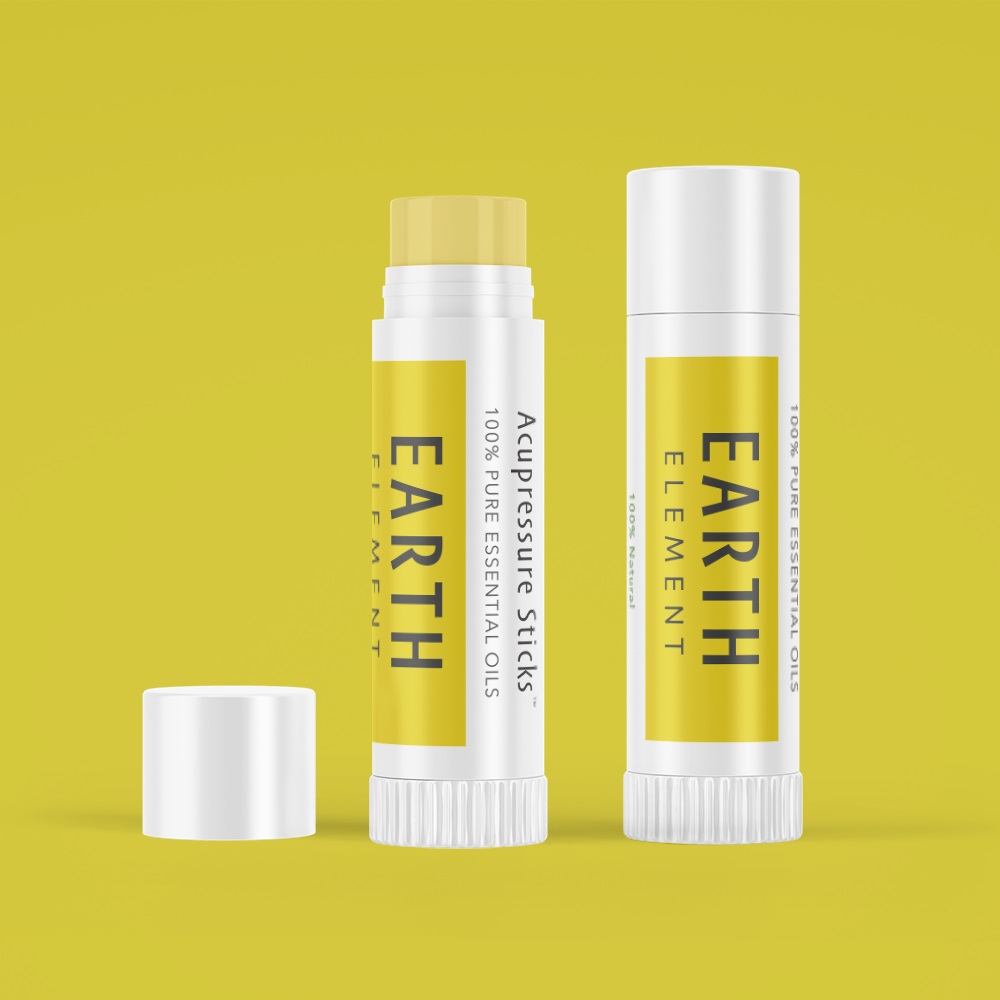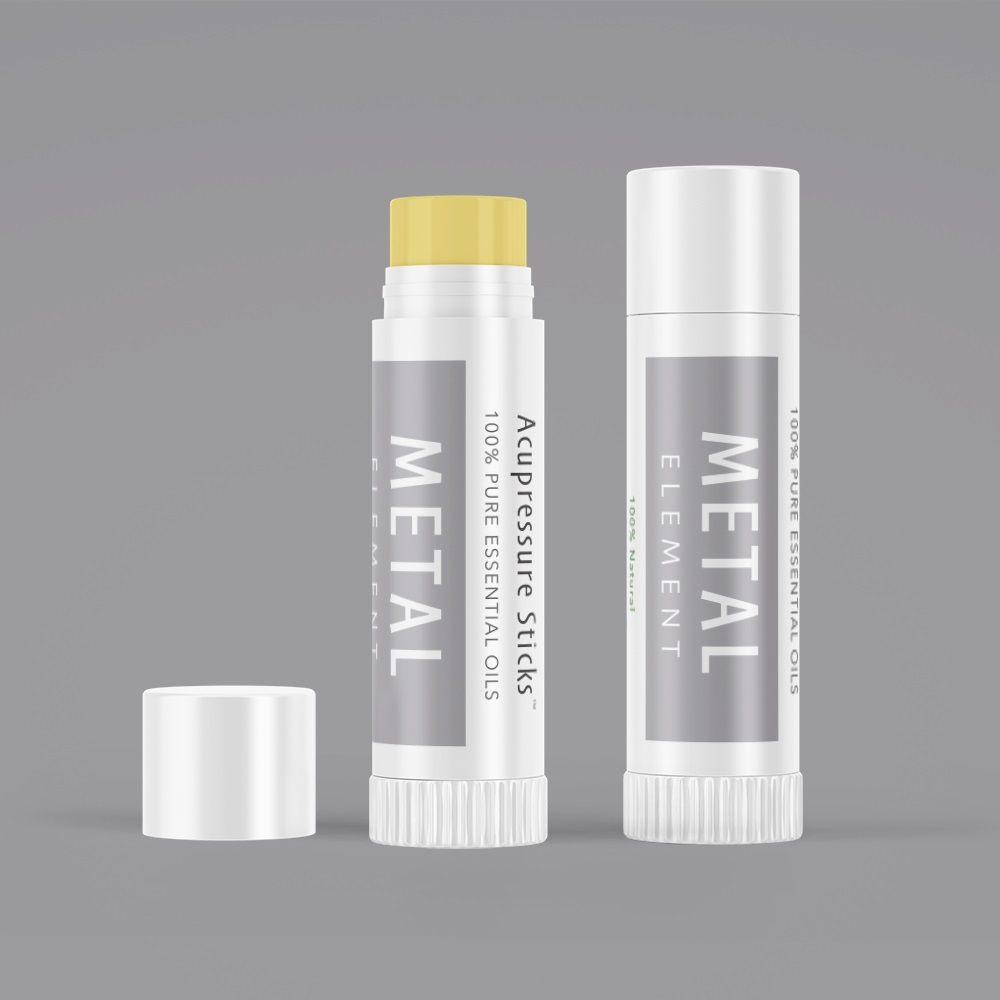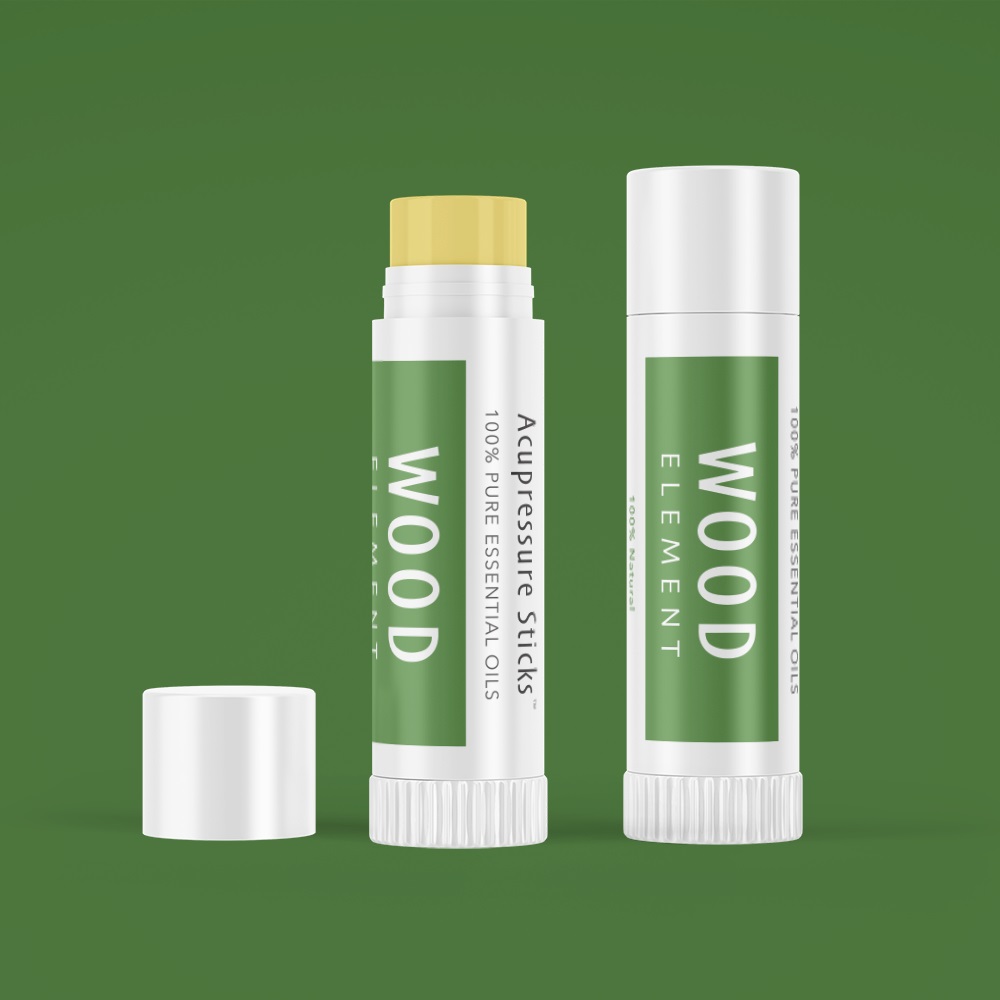Women's Health
Chinese Medicine and Women's Health Concerns
The gynecological issues that define the unique conditions that women face are actually diagnostic gold in Chinese medicine; they lend important clues to the root of imbalances leading to not only reproductive and menstrual disorders, but all ailments that a woman may be suffering from.
The three main Yin Organs of Chinese Medicine that are most commonly implicated in women's health problems are a common diagnostic trilogy: Liver, Spleen, Kidney. When these energetic organ systems are brought in to balance, women's health is restored, menstrual cycles are normalized, infertility is resolved, and menopausal symptoms averted. For best outcomes using self-care, combine associated Aroma Acu-Sticks® to acu-points, topical remedies, and good lifestyle practices.
![]()

Aroma Acu-therapy™ for Women's Reproductive Health
Kidney 3
Apply the Water Element Aroma Acu-Stick® to activate Acupressure Point KI 3
Why? Acu-point Kidney 3 is the Source Point of the Kidney energetic organ system that governs over reproduction and Yin, which when depleted is the main underlying cause of night sweats and hot flashes according to Traditional Chinese Medicine.
Apply the Earth Element Aroma Acu-Stick® to activate Acupressure Point ST 36
Why? Acu-point Stomach 36 calms the mind, nourishes Qi and Blood, fortifies the Spleen, and boosts vital energy. Stomach 36 can be used to fortify Qi of all the Energetic Organ Systems that influence women's health.
Apply the Metal Element Aroma Acu-Stick® to activate Acupuncture Point LI 4
Why? LI 4 works together with Liver 3 to invigorate the circulation of Blood and Qi and is referred to as the "Four Gates" and helps to normalize irregular menstrual bleeding.
Apply the Wood Element Aroma Acu-Stick® to activate Acupressure Point LV 3
Why? The Liver governs over menstrual blood and acu-point LV 3 is the energy source point for the Liver energetic organ system that is able to normalize the Liver function.
Apply the Fire Element Aroma Acu-Stick® to activate Acupuncture Point Pericardium 6
Why? Acu-point PER 6 fortifies the Heart, helps to regulate menstruation, and calms the mind with PMS.
Related Articles:
Correcting Constitutional Imbalances in Chinese Medicine According to Symptoms
Women's health issues often have underlying Organ-level imbalances and it is not unusual to have more than one of these patterns of imbalance.
![]()
Liver Qi and Women's Reproductive Health
Liver Qi Stagnation is a common imbalance that can impact everything from menstruation to infertility in women. It is said in Chinese medicine that the Liver stores the menstrual Blood, so the connection is makes this one of the most common root problems in all women's reproductive issue and peri-menopausal symptoms. Dark menstrual blood, irritation during or before menstruation, and irregular periods can all be caused by Liver disharmonies.![]()
Kidney Deficiency and Women's Reproductive Health
The Kidney Energetic Organ System of Chinese Medicine stores the Jing, or Essence and is directly responsible for a woman's reproductive abilities, therefore causing infertility when it is exhausted.
Kidney Yin nourishes Liver Yin and Yin Deficiency is responsible for hot flashes, night sweats, and vaginal dryness.
Blood is a Yin substances and is related to Blood Deficiency. Blood Deficiency would lead to Liver Blood Deficiency and Liver Qi Stagnation. When the condition is advanced, it may present with episodes of menstrual hemorrhaging.
Spleen Qi and Women's Reproductive Health
The Spleen Energetic Organ System of Chinese Medicine is responsible for "holding" things up, and holding things in. With Spleen Qi Deficiency one may have menstrual blood leakages or menstrual hemorrhaging due to the inability to "hold the blood". With infertility and chronic miscarriage's, the Spleen may not be "holding the pregnancy".
Chronic Spleen Qi Deficiency can lead to Internal Dampness resulting in conditions such as abnormal vaginal discharges, uterine fibroids, or even infertility as Damp Phlegm can block the eustachian tubes.
Embracing the Divine Feminine
Women are the Yin to the male Yang; women tend to possess Yin qualities of receptivity, sensitivity, and depth. We thrive when our lives are harmonious and when we possess our own quiet space where we can reflect. While Yin is a feminine quality, the truth is that both men and women possess Yin qualities.
Unfortunately, most people do not have the time or the support necessary for self-nurturing. When stressed and forced to sacrifice our passive peacefulness, negative Yin qualities begin to develop. Suffering can result when negative attributes of Yin develop and can result in secretiveness, blaming, and brooding; one can become distant and passive-aggressive when the divine feminine is neglected.
Yin qualities have been trivialized in the recent past of western culture, while Yang qualities have been highly valued. We have been pushed to work harder and longer; we are encouraged to be strong and aggressive. Yang qualities are difficult to sustain over an entire lifetime.
On the other hand, developing Yin qualities allows us to be open and receptive. By creating an open space, we allow for the infinite possibilities of the divine. When we stop planning and strategizing our life, and by letting go of the illusion that we control our destiny, we actually become more powerful.
“Prayer is when you talk to God; meditation is when you listen to God.” Unknown Source
In reality, the divine has an expanse of possibilities and solutions that we can apply to our lives beyond our own imaginings. Luckily, many are beginning to embrace their Yin within and are slowing down to reflect and meditate. Even modern western medical professionals are linking the quality of our health to the practice of meditation and our emotional wellness.
For some, it is not until a life crisis occurs that we allow ourselves the time to slow down and listen to our inner wisdom. Many find themselves seeking answers after the loss of a loved one, financial collapse, or the development of a disease. In the case of disease, one has the power to practice preventative measures before a disease is actually diagnosed.
“Treating a disease that has already developed, or trying to bring order to disruptions that have already begun, is like digging a well after you’ve become thirsty, or making weapons after the battle is over. Wouldn’t it already be too late?” The Neijing
You can learn to recognize the patterns of imbalance that form in to diseases and work to correct them. You can also adopt good living practices as such:
These comparisons and clarifications help to define the value of traditional Chinese medicine in our modern culture. The message has remained consistent for over 2,000 years; our health depends on emotional health and positive lifestyle practices according to Chinese medicine.
![]()
Veith, I. (1949) The Yellow Emperor’s Classic of Internal Medicine: Berkeley, CA: University of California Press
Hongtu, W. (1999) Clinical Applications: The Yellow Emperor’s Canon of Internal Medicine: Beijing, China: New World Press
Chen Y, Wang H, Wang S, Shi X, Wang Q, Ren Q. Efficacy of ten interventions for endometriosis: A network meta-analysis. J Cell Biochem. 2019;120(8):13076‐13084. doi:10.1002/jcb.28579
Hullender Rubin LE, Mist SD, Schnyer RN, Chao MT, Leclair CM. Acupuncture Augmentation of Lidocaine for Provoked, Localized Vulvodynia: A Feasibility and Acceptability Study. J Low Genit Tract Dis. 2019;23(4):279‐286. doi:10.1097/LGT.0000000000000489
Vahlensieck W, Lorenz H, Schumacher-Stimpfl A, Fischer R, Naber KG. Effect of a Herbal Therapy on Clinical Symptoms of Acute Lower Uncomplicated Urinary Tract Infections in Women: Secondary Analysis from a Randomized Controlled Trial. Antibiotics (Basel). 2019;8(4):256. Published 2019 Dec 7. doi:10.3390/antibiotics8040256
This information has not been evaluated by the Food and Drug Administration. This information is not intended to diagnose, treat, cure, or prevent any disease.





